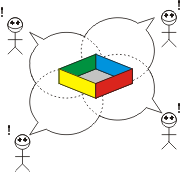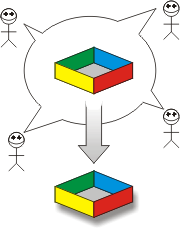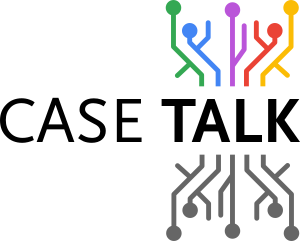Fully Communication Oriented Information Modeling (FCO-IM) emphasizes modeling the communication aspect of data. Employees constantly exchange facts through communication, such as "Invoice 1238 has an invoice date 1-1-1999". FCO-IM models such communication and facts in natural language. This article highlights the importance of communication in developing a fact-based data model.
Introduction

Developers may oversimplify the process of building a data model, but this approach only hides the required business knowledge. It fails to capture the vital communication between IT and business stakeholders, leading to inadequate documentation or data models. Such models are open to interpretation, hard to validate, and lack proper examples to illustrate usage.
Employees may have subjective perspectives on their data, which may lead to divergent views on data integration. To build an IT system that serves everyone's needs, stakeholders must agree on the data and their meaning. For this reason, the IT requirements must be presented in a manner that everyone can easily verify and agree upon.
Subjective
 Every employee has a personal perspective on reality, which may make it challenging to arrive at a shared understanding of business requirements. Employees may not talk IT through all the basics, leading to inadequate requirements. Therefore, it is crucial to model communication between employees to identify communication and IT requirements issues.
Every employee has a personal perspective on reality, which may make it challenging to arrive at a shared understanding of business requirements. Employees may not talk IT through all the basics, leading to inadequate requirements. Therefore, it is crucial to model communication between employees to identify communication and IT requirements issues.
Objective
 Employees must communicate with each other to perform their work. Interviewing employees and modeling their communication is essential to identifying different meanings or lacking requirements. A communication-oriented data model is essential for multiple stakeholders to share business knowledge, identify communication issues, and reduce costs and risks.
Employees must communicate with each other to perform their work. Interviewing employees and modeling their communication is essential to identifying different meanings or lacking requirements. A communication-oriented data model is essential for multiple stakeholders to share business knowledge, identify communication issues, and reduce costs and risks.
Intersubjective
 Modeling communication leads to knowledge documentation from multiple stakeholders, illustrating the absence of objective reality. By ironing out all differences, a shared, consistent, and well-defined communication between employees can be achieved. Agreement on such a model can only be reached by using language with real examples. The examples used and agreed upon are called facts.
Modeling communication leads to knowledge documentation from multiple stakeholders, illustrating the absence of objective reality. By ironing out all differences, a shared, consistent, and well-defined communication between employees can be achieved. Agreement on such a model can only be reached by using language with real examples. The examples used and agreed upon are called facts.
Communication Oriented
 Modeling communication using facts is a precise and valuable method. Facts are statements that employees can evaluate to be true or false. A common intersubjective reality is required to validate assembled facts as being true to the business. Using natural language may not be the easiest manner to model for an inexperienced data modeler, but it certainly is the most precise, meaningful, durable, and cost-effective method available.
Modeling communication using facts is a precise and valuable method. Facts are statements that employees can evaluate to be true or false. A common intersubjective reality is required to validate assembled facts as being true to the business. Using natural language may not be the easiest manner to model for an inexperienced data modeler, but it certainly is the most precise, meaningful, durable, and cost-effective method available.
Conclusion
Information modeling using natural language is the closest approach to achieving an objective data model. It eliminates ambiguous definitions, meaning, or specifications, and communicates facts in natural language as the basis for a solid data model and common understanding.


